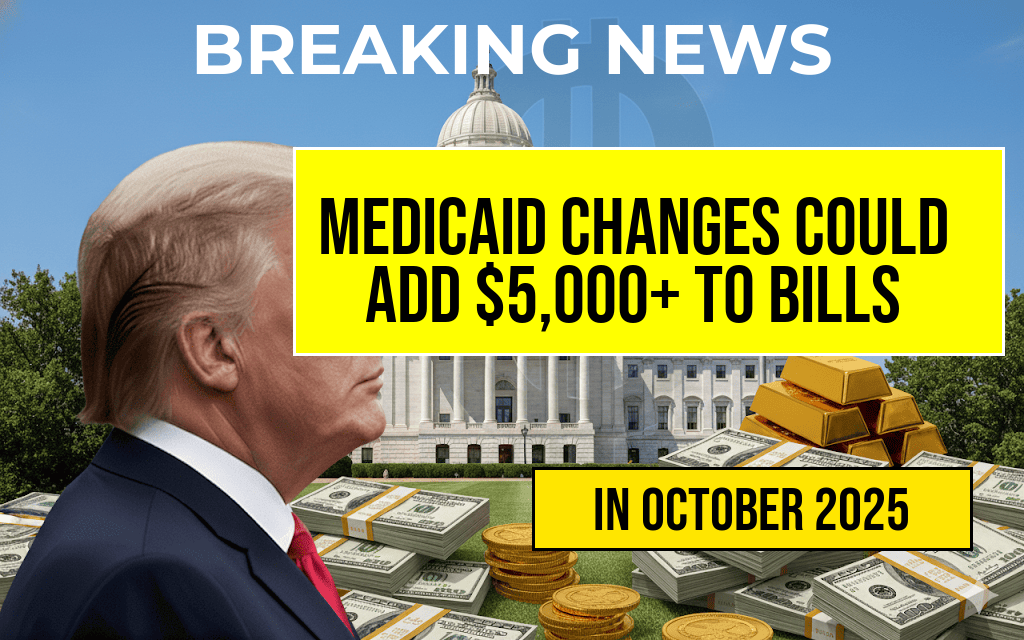Medicaid Policy Changes Could Significantly Increase Family Out-of-Pocket Expenses
Recent adjustments to Medicaid policies across multiple states are poised to increase the financial burden for many low- and middle-income families. According to new analyses, these changes could add over $5,000 annually to out-of-pocket healthcare costs for some households, reversing recent trends toward affordability. The shifts in eligibility criteria, cost-sharing requirements, and coverage limitations are sparking concern among consumer advocacy groups and healthcare experts, who warn that vulnerable populations may face greater financial strain just as healthcare costs continue to rise nationwide. These policy modifications, often driven by state-level budget considerations and federal healthcare reforms, could reshape the affordability landscape significantly in the coming months.
Key Policy Changes Driving Increased Costs
Several states have introduced or proposed modifications to their Medicaid programs that could lead to higher expenses for enrollees. Notable among these are:
- Increased premiums and copayments: Some states are requiring enrollees to pay higher premiums or copayments for certain services, which can accumulate rapidly for chronic conditions requiring ongoing treatment.
- Stricter eligibility criteria: Tightened income thresholds and documentation requirements are resulting in some families losing coverage, forcing them to seek private coverage at higher costs or pay out-of-pocket for care.
- Reduced coverage or benefit limits: Limitations on coverage for specific treatments or medications can lead to additional out-of-pocket expenses if consumers seek alternative or unapproved options.
- Work and reporting mandates: New work requirements in certain states are complicating eligibility maintenance, inadvertently causing coverage gaps and unexpected expenses.
Impact on Families: A Closer Look
For families relying heavily on Medicaid, these policy shifts can translate into substantial financial challenges. A recent report by the Kaiser Family Foundation estimates that low-income households could face an average increase of $4,800 to $6,200 annually, depending on their specific circumstances and state policies. For individuals managing chronic illnesses, the added costs may include higher premiums, co-insurance, and out-of-network charges, which can quickly surpass previous spending levels.
| Family Income Level | Previous Average Annual Cost | Projected Additional Costs | Total Estimated Annual Cost |
|---|---|---|---|
| Below 100% FPL (Federal Poverty Level) | $2,000 | $4,000 | $6,000 |
| 100-200% FPL | $3,000 | $3,500 | $6,500 |
| 200-300% FPL | $3,500 | $2,500 | $6,000 |
Federal and State Responses
While some states argue that these policy adjustments are necessary to balance budgets and maintain program sustainability, healthcare advocates warn that such measures risk pushing families further into financial hardship. The Centers for Medicare & Medicaid Services (CMS) has issued guidance emphasizing the importance of maintaining access and affordability, but individual states have broad discretion in implementing policies.
States like Arizona and Arkansas have already enacted premium requirements and stricter asset tests, leading to coverage losses for thousands. Conversely, states such as California and New York continue to prioritize expanded coverage, though even these regions face pressure to tighten eligibility and cost-sharing rules in response to federal funding constraints.
Potential Long-Term Consequences
Experts warn that increased out-of-pocket costs could lead to delayed or forgone medical care, worsening health outcomes among vulnerable populations. Delays in treatment for chronic conditions, preventive services, or emergency care not only harm individual health but can also result in higher downstream costs for hospitals and insurers.
Furthermore, the financial strain may disproportionately affect minority communities and rural populations, who already face barriers to healthcare access. A report from the Commonwealth Fund highlights that such disparities could widen as families struggle to afford care amid policy-induced cost increases.
What Families Can Do
Families impacted by these changes should explore available assistance programs and advocacy resources:
- Community health centers: Many offer sliding-scale fees or free services for low-income residents.
- State-specific assistance programs: Some states provide subsidies or exemptions to mitigate increased premiums or copayments.
- Legal and advocacy organizations: Groups like the National Health Law Program offer guidance on maintaining coverage and contesting unjust policies.
Staying informed about local policy developments and actively engaging with healthcare providers can help families navigate the evolving landscape. For more information on Medicaid policies and patient rights, consult resources like the Medicaid Wikipedia page or the HealthCare.gov portal.
Frequently Asked Questions
What are the recent Medicaid policy changes that could increase family medical expenses?
Recent Medicaid policy changes have expanded coverage but also introduced new costs, potentially adding over $5,000 annually to family out-of-pocket expenses due to higher premiums, copayments, or coverage limitations.
How might these Medicaid policy changes impact my family’s healthcare costs?
These changes could lead to increased medical bills by requiring families to pay more through premiums or co-payments, especially for services that were previously covered with less or no cost, thereby raising overall out-of-pocket expenses.
Who is most affected by the increased costs associated with Medicaid policy updates?
Low- to middle-income families relying on Medicaid for healthcare are most affected, particularly those with chronic conditions or extensive healthcare needs that now face higher cost-sharing requirements.
Can families still benefit from Medicaid despite the policy changes?
Yes, families can continue to benefit from Medicaid, but they should be aware of the potential for increased costs and review their coverage options carefully to manage their medical expenses.
What steps can families take to manage rising medical bills due to Medicaid policy updates?
Families can explore financial assistance programs, seek cost-saving healthcare options, and stay informed about policy changes to better plan and reduce their out-of-pocket expenses.










